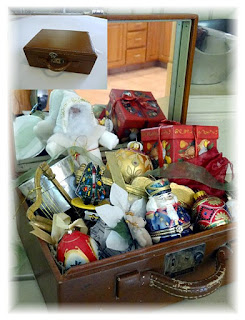My husband and I just returned from a Christmas trip to Las Vegas, where we discovered it isn't all about tinsel and neon. A highlight was our visit to "Titanic: The Artifact Exhibition," which has been a fixture at the Luxor hotel for several years. As the press release states, "viewed by more than 20 million people worldwide, the Exhibition is among the highest attended in history."
Hundreds of authentic objects gathered from around the site of the ship's sinking are on display, including a massive chunk of the ship's hull, called "The Big Piece." What makes the experience come alive, however, is the way in which the items are presented to tell a story. Beginning with the Titanic's design and construction, to depictions of shipboard life, and the events leading to the ship's sinking, the viewer is taken back in time. Various sections simulate a third-class cabin, the Grand Staircase, and a luxurious first-class suite. We see dishware, beautiful jewelry, and gambling chips. One very dark area represents the promenade deck on the moonless night of the disaster: only starlight aided those on watch for icebergs. The sound of the rushing ocean water alongside is somewhat ominous. The next room has a large wall of "iceberg," which one is encouraged to touch. We learn that the water temperature was actually colder than the ice, which I could only stand for a few seconds. People didn't only die from drowning, but from the freezing water.
The part that struck me the most, however, were the stories of personal experience. When you enter the exhibit, you're issued a replica of a boarding pass with the name of an actual passenger, which includes age, destination, and what class traveling. I had the pass of Esther Bloomfield Hart, traveling in second-class with her husband and small daughter. Throughout the exhibit, I paid special attention to items relating to second-class. There were several posters telling stories which represented a cross-section of the passengers and crew, along with their belongings. From a handbag and the hand-addressed envelopes found inside, a set of tools someone was carrying to start a new life, to a simple pair of socks, it was a deeply moving experience.
The last room is a simple wall with the name of every passenger. The smaller section of names were the survivors; a huge area lists the names of those lost. I found that Esther Hart and her daughter were saved, but they never saw Mr. Hart again.
Truly a memorable and recommended outing.





